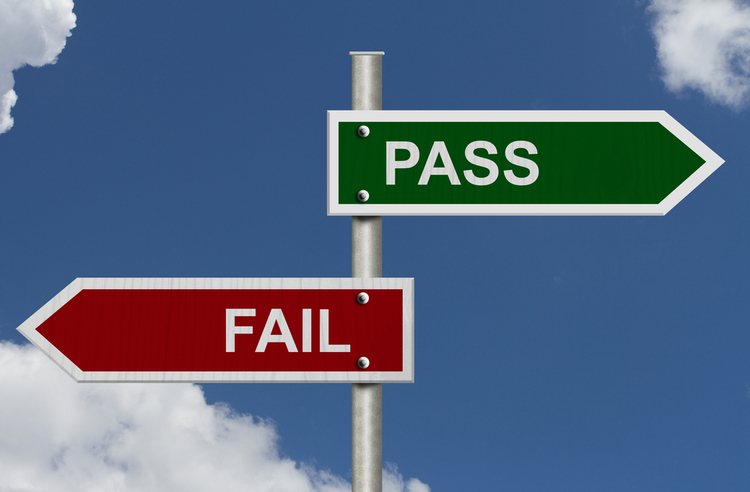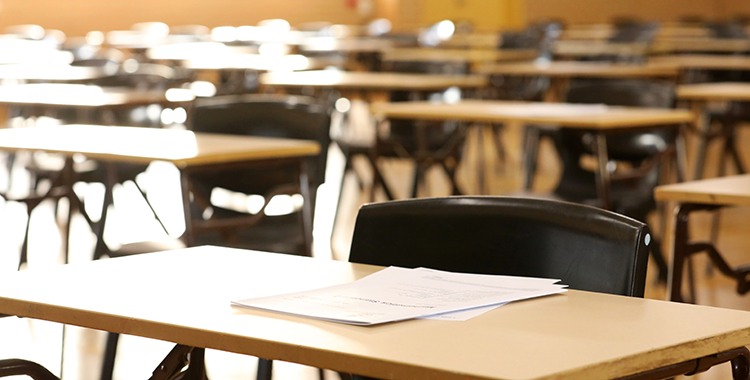In recently released data, ABA parses out bar passage rates by race, ethnicity and gender

Image from Shutterstock.
According to information released Monday by the ABA Section of Legal Education and Admissions to the Bar, white candidates who took a bar exam for the first time in 2021 had the highest pass rate, which was 85%. For people of other races or ethnicities, the first-time pass rate ranged from 47% to 84%.
The pass percentages include people admitted to a bar through diploma privilege. In 2021, 21,717 first-time test-takers were white.
Among other first-time test-takers:
• The pass rate for Asians was 78.54% out of 2,177 candidates.
• The pass rate for Hispanics was 71.92% out of 4,089 candidates.
• The pass rate for Native Americans was 70.49% out of 183 candidates.
• The pass rate for Blacks was 60.89% out of 2,552 candidates.
• The pass rate for Hawaiians was 46.67% out of 45 candidates.
The data also examines what is known as an “ultimate pass rate.” It is based on graduating classes from two years ago, which for this year is 2019. That pass rate is used in determining law school compliance with Standard 316, which requires that at least 75% of a law school’s graduates who take a bar exam pass within two years of graduation. When the ABA released its overall bar pass data on April 26, Bill Adams, managing director of ABA accreditation and legal education, noted that bar passage rates are important consumer information—but not compliance reports for Standard 316.
Bar passage data by race was released for the first time in 2021.
“This is the second consecutive year that the section is releasing this data in response to concerns about the lack of national data on bar passage by members of different racial and ethnic groups. We promised to collect and publish such aggregate data and consider whether the requirements of Standard 316 needed to be reviewed in light of what we collected. We will continue to evaluate the annual data and consider any changes as appropriate,” said Adams in a May 2 news release.
For the two-year bar passage data released:
• The pass rate for whites was 93.98%.
• The pass rate for Asians was 89.05%.
• The pass rate for Hispanics was 86.65%.
• The pass rate for Native Americans was 88.89%.
• The pass rate for Blacks was 81.49%.
• The pass rate for Hawaiians was 83.33%.
Deborah Merritt, a recently retired professor who taught at the Ohio State University’s Moritz College of Law, co-authored Building a Better Bar: The 12 Building Blocks of Minimum Competence. According to her, the 2021 and 2019 pass rates show “stark differences” in pass rates by race and ethnicity.
Her piece supported using multiple choice questions sparingly, if at all, and replacing essay questions with performance tests. According to Merritt, the current bar exam requires too much memorization of detailed rules, and success on the bar often requires paying for expensive bar prep and forgoing everything, other than bar study, for two months before the exam.
“This memorization won’t serve them in practice: they will quickly forget most of the rules. But it’s essential to pass the exam. The exam thus becomes a test of financial resources—and graduates of color have fewer financial resources (on average) than white graduates,” wrote Merritt in an email to the ABA Journal.
The National Conference of Bar Examiners is in the process of redesigning its bar exam, and Merritt served on its content scope committee. Multiple choice questions will still be on the exam, but they will look different than the current version, Merritt and others said about the changes at a January panel by the Association of American Law Schools.
Also, the Multistate Performance Test could have questions in which candidates complete certain sections of a pleading or a contract.
Critics have said the current bar does not adequately measure skills needed to competently practice law.
“Racial disparities in bar outcomes have led to finger-pointing. We point to the capabilities of the applicants, the quality of the law schools and the impact of remote education. We point to just about everything except the test itself. Rather than continuing to feed our law school graduates to the coffers of those who profit from the bar exam, it is high time for us to put some real focus on the basic skills that new attorneys need to practice law. It’s our job to make sure that students have an opportunity develop those skills while in law school,” wrote Marsha Griggs, an associate professor and director of academic enrichment programs at the Washburn University School of Law, in an email to the Journal.
The data also parses out bar passage data by gender.
See also:
ABAJournal.com: “Here’s what could have been behind the shake-ups in US News rankings, say some deans”



